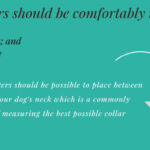Can Dogs Get Ingrown Hairs
Dogs are man’s best friend, and as pet owners, we want the best for them. We want to ensure that they are healthy, happy, and comfortable. However, just like human beings, dogs can get ingrown hairs too. Ingrown hairs in dogs can cause discomfort and even pain if left untreated. In this article, we will explore the causes, symptoms, and treatment of ingrown hairs in dogs.
What Are Ingrown Hairs?
Ingrown hairs occur when a hair grows back into the skin or curls around and re-enters the skin. It can happen to anyone with hair on their body, including dogs. When an ingrown hair occurs, it can lead to inflammation, swelling, redness, and infection.
Can Dogs Get Ingrown Hairs?
Yes, dogs can get ingrown hairs. Just like humans, dogs have hair follicles that can become clogged with dead skin cells or debris. When this happens, the hair may grow sideways or curl back into the skin instead of growing outwards.
What Causes Ingrown Hairs in Dogs?
Several factors can cause ingrown hairs in dogs. Some of these include:
1. Skin Irritation: Skin irritation is one of the most common causes of ingrown hairs in dogs. This irritation could be due to friction from a tight collar or harness or allergies caused by food or environmental factors.
2. Poor Grooming: Poor grooming practices such as infrequent bathing or brushing can also lead to ingrown hairs in dogs.
3. Breed Predisposition: Certain dog breeds are more predisposed to getting ingrown hairs than others. Breeds with curly or wiry coats such as Poodles and Terriers are more likely to develop ingrown hairs.
Symptoms of Ingrown Hairs in Dogs
The symptoms of ingrown hairs may vary depending on the severity of the condition. However, some common symptoms include:
1. Redness and Swelling: Ingrown hairs in dogs can cause redness and swelling around the affected area.
2. Itching and Scratching: In some cases, ingrown hairs may cause your dog to itch or scratch the affected area excessively.
3. Bumps or Pimples: Ingrown hairs may also present as small bumps or pimples on your dog’s skin.
4. Hair Loss: If left untreated, ingrown hairs in dogs can lead to hair loss around the affected area.
Treatment of Ingrown Hairs in Dogs
The treatment for ingrown hairs in dogs depends on the severity of the condition. For minor cases, you can try the following home remedies:
1. Warm Compresses: Apply warm compresses to the affected area for a few minutes several times a day. This will help to reduce inflammation and promote healing.
2. Grooming: Ensure that you groom your dog regularly by bathing and brushing them frequently.
3. Topical Treatments: You can use topical treatments such as medicated shampoos or ointments to soothe and heal the affected area.
For more severe cases, it is advisable to consult your veterinarian for proper diagnosis and treatment options. They may prescribe antibiotics or other medications to treat any underlying infection or inflammation.
Prevention of Ingrown Hairs in Dogs
Preventing ingrown hairs in dogs involves adopting good grooming practices such as regular bathing and brushing. Additionally, avoid using tight collars or harnesses that may cause skin irritation or friction. Lastly, ensure that your dog’s diet is well-balanced and free of potential allergens.
Conclusion
In conclusion, dogs can get ingrown hairs just like humans. The causes of ingrown hairs in dogs include skin irritation, poor grooming practices, and breed predisposition. The symptoms of ingrown hairs include redness and swelling, itching and scratching, bumps or pimples, and hair loss. Treatment involves home remedies such as warm compresses and topical treatments, or more severe cases may require veterinary intervention. Prevention involves good grooming practices, avoiding tight collars or harnesses, and a well-balanced diet. As pet owners, it is our responsibility to ensure that our furry friends are healthy, happy, and comfortable.



